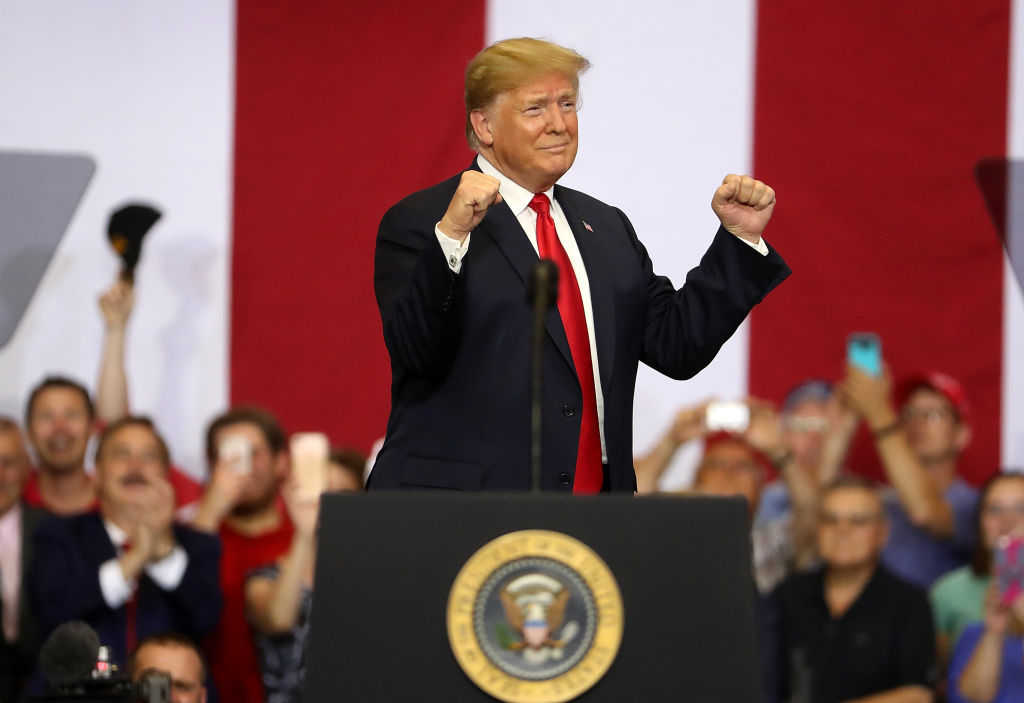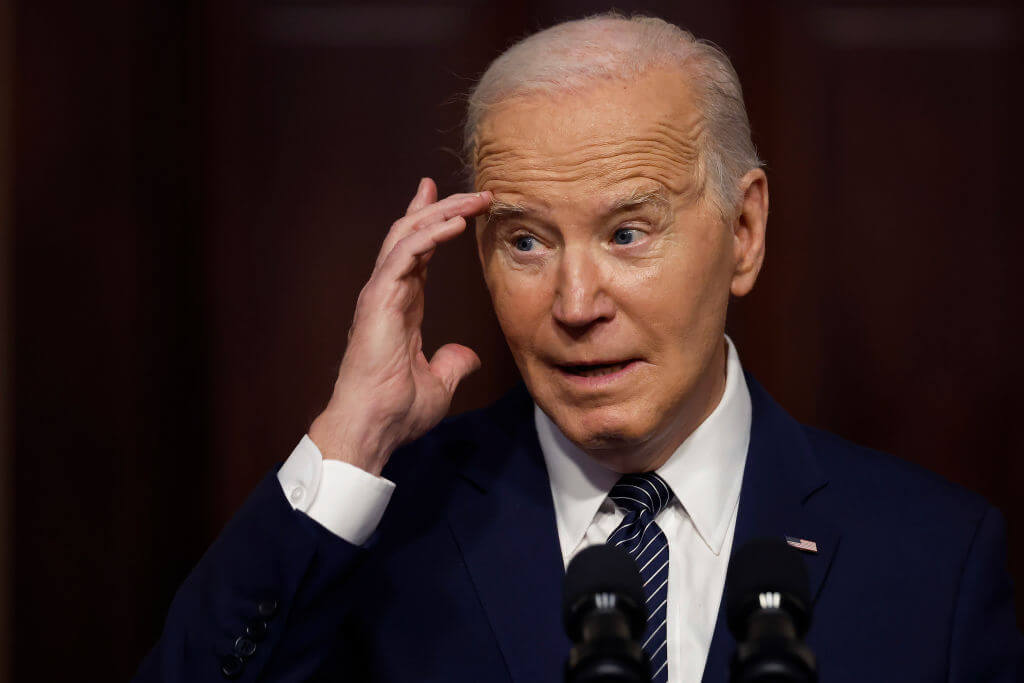Americans are being given a national ink-blot test. Their answers tell us how a divided country sees the political landscape and what they think of President Trump’s bold efforts to reshape it.
The scope for differing interpretations is illustrated by a story about one such Rorschach test. The psychiatrist shows his new patient ink blot after ink blot. No response. Finally, the exasperated doctor pleads with him to say something, anything. “Look, doc,” he says, “I didn’t come here for you to show me dirty pictures.”
That’s exactly how Democrats see Donald Trump’s presidency. It’s one dirty picture after another. A few moderate Republicans share that perspective, but they are outliers in a party Trump has reshaped in his own image.
When Trump’s party looks at the same ink blots, they see the Sistine Chapel. For them, this inspiring vision paints over the graffiti scrawled by the Biden administration. Of course, Democrats think Trump is doing the spray-painting.
It is hard to imagine two more starkly different interpretations of American politics today. Average voters lie somewhere in the middle, but closer to the Republican view, according to recent polls. They are pleased with the opening weeks of the new administration, repulsed by the Democrats’ inflammatory rhetoric, and soured by their memories of the Biden years. Public approval for the Democratic Party has plummeted to historic lows, nearing 30 percent.
The Democrats’ catastrophic numbers and Trump’s strong ones are huge political assets for the new administration. The crucial question is how can the president exploit those assets before the glow fades?
Trump’s answer is to move with dizzying speed, using his discretionary powers and testing their limits. He is issuing a flurry of Executive Orders, appointing loyalists to all key positions, exerting firm control over White House staff and executive branch agencies, and tasking Elon Musk and his DoGE team with conducting line-by-line audits of federal expenditures.
Musk’s discovery of wasteful spending, gross incompetence, hidden stashes of taxpayer money, funding for friendly journalists, and outright fraud makes for stunning headlines. His findings help Trump in several ways. First, they show the president means to bring business efficiency and real oversight to a profligate blob of bureaucrats. Second, they show a president keeping his campaign promises to root out incompetence and ideological bias in government agencies. Third, they show Trump using DoGE to drive a stake into the heart of the Democratic Party, which built the administrative state, filled it with partisan acolytes, and used it to funnel taxpayer money to favored causes.
Not surprisingly, Democrats have mounted the battlements to defend the edifice they built. Unfortunately for them, millions of voters are screaming, “No!”
Trump knows he has to act fast. But he faces one other formidable limit besides the ticking clock. He can only accomplish so much without help from the House and Senate. He needs them to raise the debt ceiling, keep the government open, pass a budget, and fulfill his campaign promise to reduce taxes. He needs the Senate to speed approval for his executive branch appointments.
He may also need legislation to sustain some actions he has already taken. Whether he does depends on how federal courts interpret the scope of his presidential authority. That contested terrain includes abolishing some agencies, offering buyouts to nearly all federal workers, firing those he considers excess baggage or obstacles to his programs, and impounding money appropriated during the Biden administration for projects Trump opposes.
Passing legislation like this is always difficult. It is even harder when the goals are so ambitious, the House majority so narrow, and the Senate majority so far short of the super-majority needed to kill filibusters.
Those are major obstacles. Trump hopes to offset them with a slew of major advantages:
He needs only a simple majority in both chambers to pass budget bills, bypassing the Senate filibuster.
He is tackling issues on which he campaigned and won.
He is beginning with very popular positions. Call them”80/20 issues,” where 80 percent of voters support his initiatives. Although many are minor and symbolic, they are eye-catching and build public support and momentum.
Democrats are unintentionally boosting Trump by taking the 20 percent side of these issues, partly because their progressive base backs them and partly because party activists seem hell-bent on opposing Trump at every step.
Trump knows how to sell his program to voters, and he’s devoting considerable time to doing it. He’s got an effective Press Secretary to help.
Trump and his team are taking full advantage of the new media landscape, populated with favorable podcasts, to offset predictable opposition from declining mainstream media.
Trump has established firm control over his administration, a dramatic difference from his first term, when he was undermined by opponents buried in the White House staff and Executive bureaucracies, especially the FBI and CIA.
Trump has secured complete control of the Republican Party and can punish most opposition within it, mostly by threatening to back primary opponents.
He is asserting newfound energy in the White House, following four years of a bumbling, inarticulate “basement president” in his dotage.
Finally, he is facing an opposition party without a leader or positive agenda, reduced to singing the old Groucho Marx song, “whatever it is, I’m against it.” It is not a winning tune.
Those are powerful assets, and Trump must capitalize on them quickly if he is to succeed.
Success means one thing above all: delivering results voters can feel.
Trump knows it. That’s why he prepared so carefully during his four years in exile, choosing both policy priorities and people he can trust for senior positions. Now, he’s acting decisively.
The Democrats are giving him a giant helping hand with their crazed, incoherent responses. Their most reviled politicians stand in front of the most reviled government agencies, striking poses in front of the cameras. They yell, “Trump is a fascist.” Lately, they’ve added a new buzzword: “constitutional crisis.”
Their volume is high but their public support is low. Voters want to give Trump a chance. Not forever, but for now. Polls show Americans favor Trump’s initial actions and are repelled by Democrats’ reflexive opposition, sheathed in crude language. If the president is to retain that support, he must deliver on key issues.
Democrats have compounded their problems by taking the unpopular side of prominent issues, such as immigration. Where Elon Musk finds government waste, they sling mud at him and defend the bureaucrats. They file lawsuit after lawsuit against Trump, even though voters rejected the last lawfare campaign. They are outraged, outraged at everything.
Trump’s avid supporters have responded in kind. They are especially harsh in denouncing court rulings against the Trump administration, which they call “a judicial coup by partisan judges.” It’s bullhorn versus bullhorn, not Lincoln versus Douglas.
Whatever the merits of these early judicial rulings, they pose a political trap for Trump in two ways. First, they block his actions, at least temporarily, and so prevent him from delivering results to voters. Second, and far more important, they tempt him to ignore the rulings.
Ignoring court rulings would be a grave error, politically and constitutionally. Voters rightly believe presidents should respect decisions by federal judges, even when the voters themselves disagree with those decisions and think the judges are biased. Democrats would pounce, saying the president’s actions confirm their basic line of attack: “Trump is a dictator, not a legitimate constitutional leader.” The mainstream media would amplify that narrative.
Americans consider respect for judicial decisions a fundamental presidential responsibility. Presidents are welcome to attack adverse rulings as biased and unjustified. They are certainly welcome to appeal those rulings to higher courts. What they are not welcome to do is ignore the rulings. They will pay a high political price if they do.
The language surrounding all these disputes is nasty. Public forums are polluted with ad hominem attacks: crude epithets masquerade as coherent arguments. Each side labels the other as a danger to democracy and truly believes it.
President Trump’s response to these angry tirades is fascinating. Most presidents would mouth soothing platitudes about compromise, unity, and restoring goodwill. Not Trump. His pitch is that Americans will come together when his policies succeed.
That’s a more honest answer than the usual claptrap. It won’t satisfy his rabid opponents, of course. Nothing would. But it does appeal to the vast middle of the U.S. electorate. They yearn for a more competent government, a growing economy, higher real wages, reduced inflation, a secure border, and fewer fentanyl deaths. They want violent gang members deported, not protected in “sanctuary cities.” They want a president who can deliver those results.
Democrats, sinking in a pit of despair, can only claw back by formulating a positive agenda and promoting it effectively. They need to explain why they oppose some (but not all) Trump proposals. They need to stop positioning themselves as enraged, irrational, immovable obstacles, who take the wrong side of issues most Americans favor. It’s not going well, but that could change.
Those are the ink blots on the walls of our politics today. It’s a Rorschach test, and Americans will take it the next time they go to the polls.


























Leave a Reply